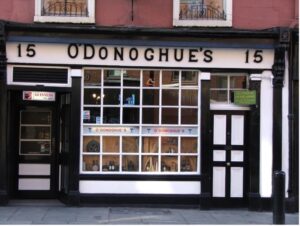Article written by Jennifer Chee March 8th 2024
St. Patrick’s Day https://stpatricksfestival.ie/ celebrations are set to outshine the anticipated cloudy Irish forecast, with most Dublin pubs scheduled to open their doors for a weekend of merrymaking. March 17th marks the largest internationally recognised Irish festival, as tourists and locals flock to big cities and unite in a day of drinking, singing and an encompassed appreciation of Irish culture. As a globally acknowledged event, Dublin boasts one of the world’s biggest on-street celebrations.
Tradition is at the heart of St. Patrick’s Day https://stpatricksfestival.ie/, showcasing parades, Irish dancing and live trad sessions – otherwise known as céilithe’s. Historically, ‘wetting the shamrock’ was a popular drinking custom amongst the Irish, which involved drinking a glass of beer, cider or whiskey, at the bottom of which lay a shamrock. Revellers would consequently toss it over their left shoulder to secure good luck. Whilst a real shamrock may not be as easy to find these days, it is still a prominent symbol for the day, and visitors in Dublin will occasionally notice the shape as a decorative finish atop the odd pint of Guinness.
Ultimately, drinking has become a notable part of St. Patrick’s Day. While this may ensure a memorable weekend in the capital, navigating the cobblestone streets can become an awkward and daunting task amidst the crowds of revellers sprawled across the city. Gaining an understanding of Dublin’s best local and tourist drinking spots, then formulating a plan before the weekend, can allow a little rest bite in an otherwise chaotic afternoon.

Camden Street is always a solid choice for finding a union of local liveliness and great pints of Guinness. A street is spoilt with choices for pubs and bars, it is a safe bet for your Dublin drinking experience – a pub crawl could very easily be done limited to this street alone! Local hotspots include Devitt’s,https://www.devittspub.ie/ showcasing live trad sessions seven days per week. With an array of local thirst-quenchers including beers, renowned Irish gins and whiskey, the long-established location is a picture-perfect representation of Irish comfort. Alternatively, head down the road to Ryans https://ryansofcamdenst.com/. Known amongst locals as a pub rooted in Tipperary heritage, its interior features blue and yellow as a nod to its parish roots. It is a popular spot for out-of-Dubliners located right on the corner where Camden Street meets Camden Row. To get a feel for outer city life in the inner city, visit the 1872-established, second-generation country pub for a real sense of community, as well as a generous selection on tap.
Kill two birds with one stone and unite tourist attractions with Paddy’s Day drinking by visiting Temple Bar, https://thetemplebarpub.com/home to the most famous pub in Dublin. The Temple Bar sees Irish legacy meet budding tourism in an establishment that often has revellers overspill into the street. As a must-visit during your Dublin stay, why not combine the nation’s greatest holiday with the city’s most famous watering hole?
A short walk from The Temple Bar you get to Dame Tavern https://www.facebook.com/guinnessheaven/, a spirited spot for local musicians. With covers of Irish tunes from The Cranberries to The Dubliners, this is a sure fix for those who hope to secure a song and dance during St. Patrick’s Day celebrations. A family-run pub for over forty years, Dame Tavern highlights community, as collections of small stools allow drinkers to gather, side by side with musicians for a traditional Dublin session. Recognised as one of the best small pubs in Dublin, ensure early arrival to avoid disappointment.

For those who love the journey and are looking to wind their way around the city, be sure to hit up O’Donoghue’s Bar, https://www.odonoghues.ie/famously regarded as the watering hole of The Dubliners. Located on Merrion Row, it is an easily accessible central option only a stone’s throw away from St. Stephen’s Green. Whilst you may hear the catchy tunes of The Dubliners elsewhere around the city, this is where they are originally associated.

